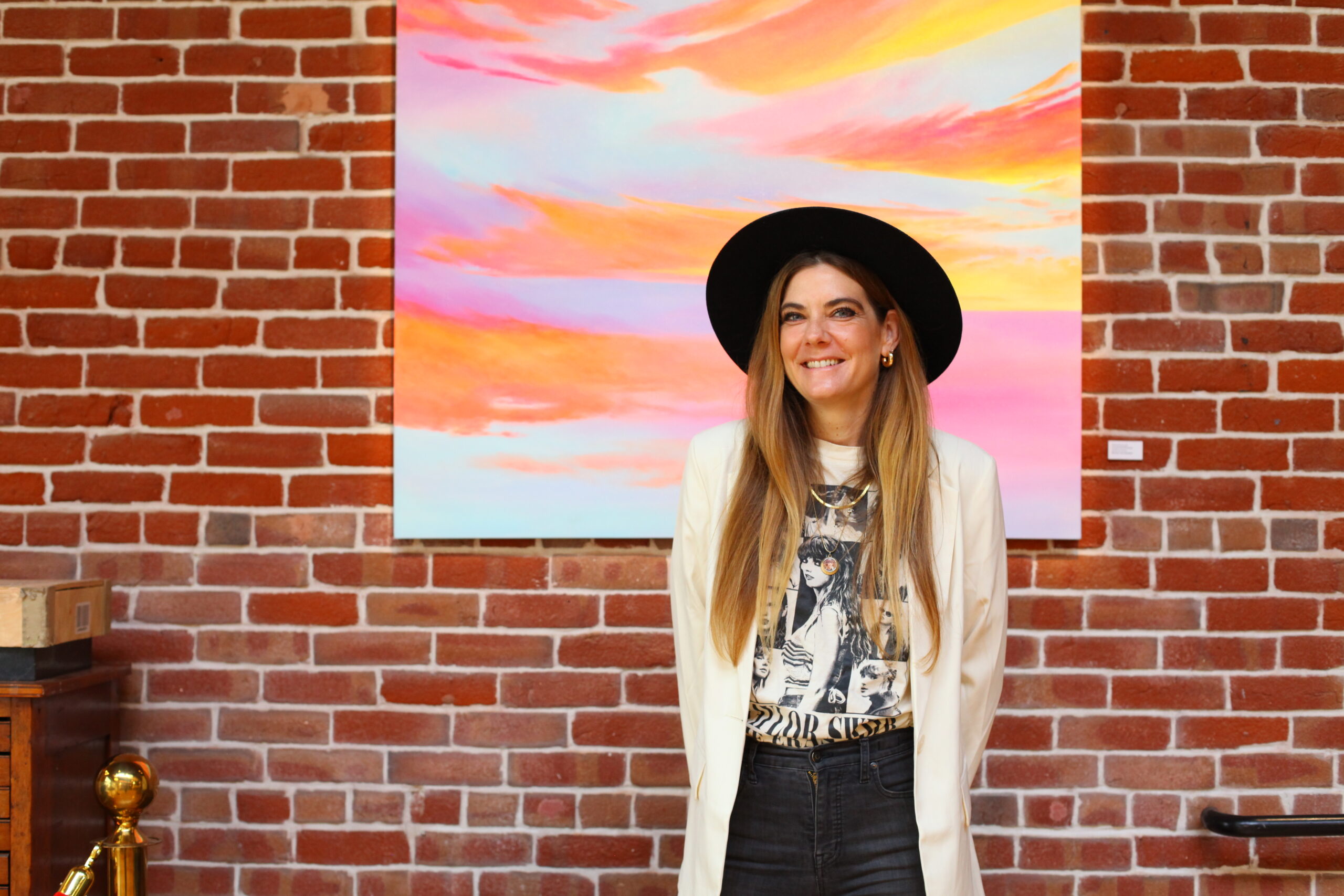Q&A with Stefanie Bales

In the last exhibition of the year at Sparks Gallery, Stefanie Bales’ solo exhibition examines the theme of “imagination” through a visual exploration of collective subconscious. Amor Terrae: Letters to the Wild is the culmination of years of research and exploration into Gestalt principles of visual perception, the collective subconscious, and the artist’s own intuition and perspective on our interactions with the natural world. She draws from a range of styles—realism, surrealism, and pure abstraction—in the exploration of place and feeling. Below Bales explains how she develops these “dreamscapes” and the technique process behind them.
Sparks: Can you explain your subject matter in the show?
Bales: The work that I create I call “dreamscapes” because they are all non geographical. They reference landscapes and seascapes, but they are not any specific place because of the process I use. Instead they are amalgamations of different typographies that blend into one. You’ll look at a landscape and wonder “Is that Baja?” or “Oh, I’ve been to that place in Peru!” but you haven’t been, because it doesn’t exist in the way that I’ve painted it. And there will always be surreal elements in the painting based on time, space, and season; things are juxtaposed in a way that you would never see occurring in nature. That concept really pushes me creatively to form these nostalgic feeling landscapes.

Sparks: Tell me about your creative process and the technical way you create the images in your paintings:
Bales: The process I use when I’m painting is always intuitive. I’ll have an idea or a piece of inspiration that sparks my creativity. But the process itself varies from one type of painting to the next. For the work that I’m known for, which is the hyperreal landscapes and seascapes, I use an original process I developed. I try to liken it to the idea of building out a collage. So I’ll take a specific visual element, like an ombre color fade or a cloud (I once did a whole painting inspired by graphic rug textures), and I will collect scraps of those things as long as they are on paper. Then I use a medium to pull the ink from the paper onto the canvas in little bits. I build out all of the imagery by repeating this process, and then I paint in, around, and over the inspiration pieces.
Sometimes the transfers work pretty fluidly, sometimes they almost totally fail. Either way, I try to work that into the painting so that if it does fail, I will usually paint over it and still see how I can continue to evolve it and still have that part fit into the narrative. I will work on it until it “middles out” to where the painting finally comes into itself, and that’s where it shows those surreal and hyperreal elements if the transfers work well.

Sparks: What is the reason you’ve created these specific compositions in your paintings? What’s the passion behind it?
Bales: It is truly a result of the process. I actually stumbled on it by accident; I was just in that state of play one day where I was toying around, and the idea came to me of bringing all these different pieces together of things that inspire me and that exist in nature one way or another. I can take those pieces and recreate them in my own voice, that’s what I think I was doing.
I like to say that I’m a painter of light; that is truly what inspires me. Honestly, the landscapes and the seascapes are the result of wanting to paint the sky and the interaction of the sun and the light on the landscape and sea below. So there’s the recurring inspirations and the different ways in which they play out. The idea is that I create these dreamscapes that are surreal and metaphysical and tap into Gestalt perceptual psychology. And the main theory behind that is “the whole is greater than the sum of its parts”. So you may look at a landscape at first and see one thing, but it’s not until you really get into it and start breaking down the image that it doesn’t really make sense or look a certain way. I like to say that my work reflects the way you see things when you close your eyes, so only the best parts, foregoing everything that isn’t the most beautiful.

Sparks: What is the most important advice you would want to share with young, aspiring artists?
Bales: I think it’s so hard depending on the season that you’re in to say any one thing, but one thing that I feel helped me in my path to get to where I am today is what I call “riding the wave”. So not forcing any specific thing to happen or any one direction. My work and my brand that I’ve now built are very multifaceted, and I find that I have seasons where I’m in heavy production mode with my personal work, or sometimes I’m doing a lot of client commission work. I do a lot of murals as well, so sometimes I’m on site everyday. There was even a year where I was basically like a full time muralist, which is not something I ever intended to do, but if you have work coming in you take it. It is about having multiple arms and a diversity of offerings and following the things that seem like they are in alignment and not forcing any one thing. I was never at any point as an artist like “I should move to LA or New York City and just try to make it”, that was not my prerogative or the lifestyle that I wanted. So I just took my time with my practice and moved forward as best I could. It’s always an evolution, so just understand that no two seasons are going to be alike.


